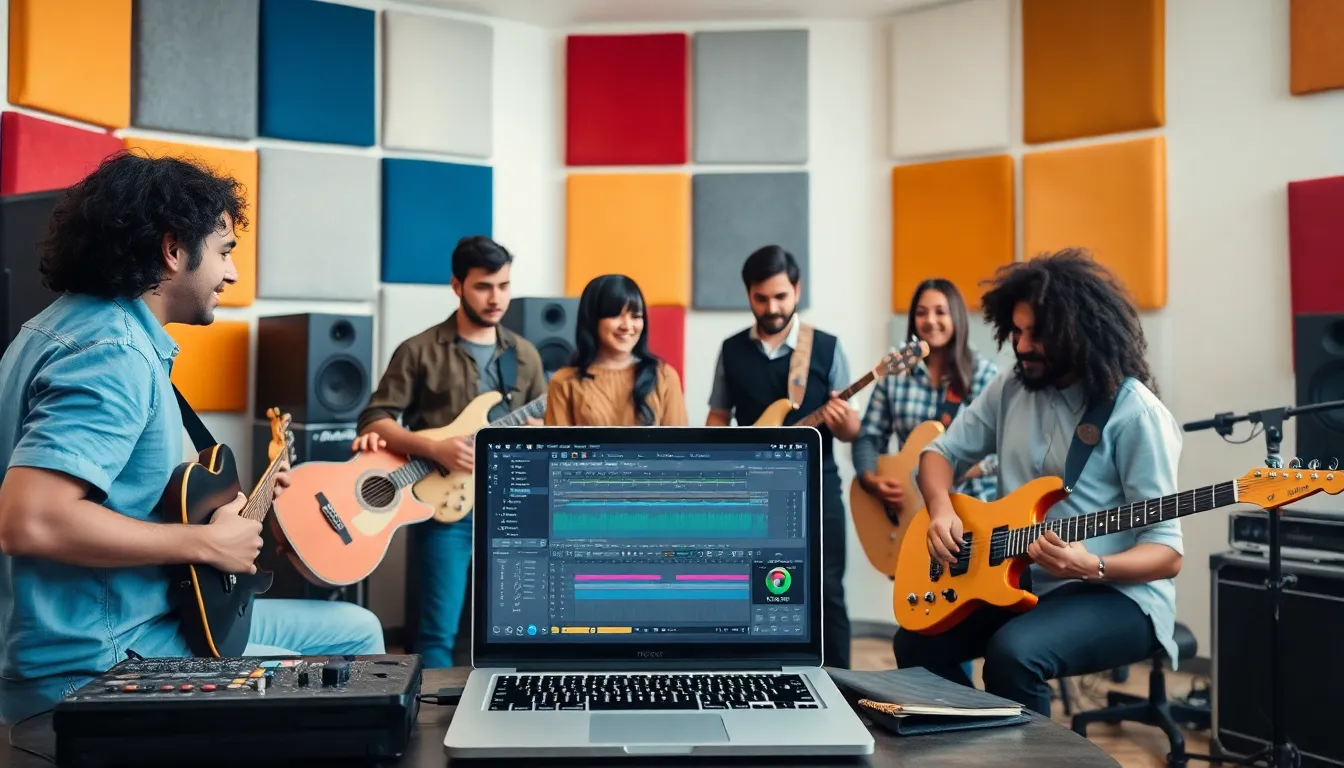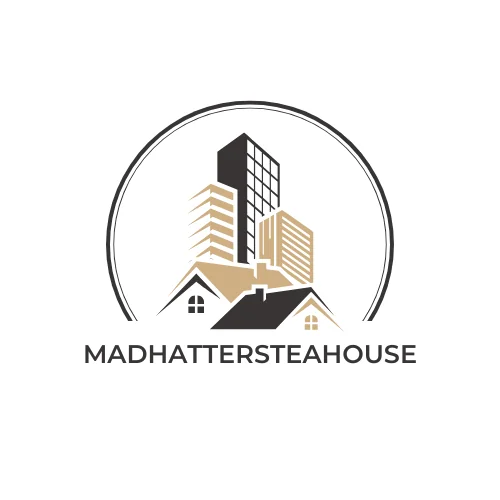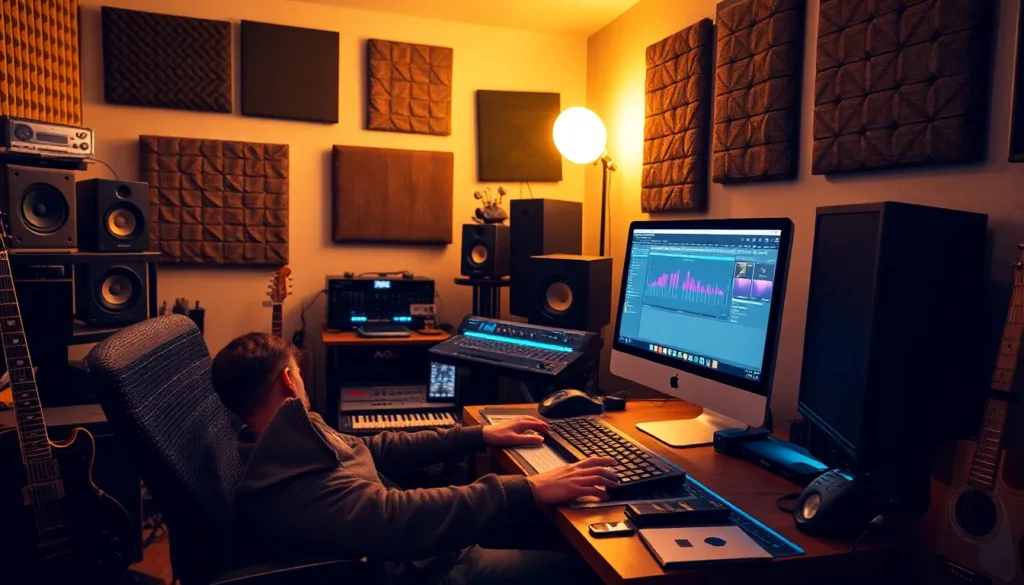In a world where music production can feel like rocket science, Endbugflow software swoops in like a superhero with a cape made of sound waves. This innovative tool promises to transform anyone into a music-making maestro, even if they can barely hum a tune. But is it really the magic wand every aspiring musician needs?
Table of Contents
ToggleOverview Of Endbugflow Software
Endbugflow software functions as a user-friendly platform for music production. Designed for individuals of varying skill levels, it offers tools that make music creation accessible. Musicians, whether beginners or seasoned, find that its interface simplifies complex processes.
The software incorporates features such as intuitive drag-and-drop capabilities. Users can easily manipulate audio clips, arrange them into compositions, and add effects seamlessly. Many appreciate its extensive library of loops, samples, and virtual instruments, all designed to enhance creativity.
Collaboration stands out as a key aspect of Endbugflow. Musicians can work together in real-time, allowing for a dynamic exchange of ideas. The software supports various file formats. Therefore, users can easily import and export projects across platforms.
Customization remains another strong point. Users can tailor their setups to match personal preferences, creating a comfortable workspace. The software’s performance is notable, with low latency and optimal resource management.
Regular updates ensure that users receive new features and improvements. This commitment to development keeps the software relevant in the fast-evolving music industry. Endbugflow’s community also offers forums and resources where users can seek support or share tips.
Overall, Endbugflow software serves as a comprehensive tool for anyone looking to embark on their music production journey. Its compatibility with both beginners and experienced musicians makes it a versatile choice. The promise of empowering users aligns with the real-world experiences shared by the growing community of Endbugflow users.
Features Of Endbugflow

Endbugflow presents an array of features designed to enhance the music production process for all users. Its capabilities foster creativity, collaboration, and customization.
User Interface
A clean interface simplifies navigation and encourages creativity. Users find intuitive controls that streamline the music-making process, allowing focus on creativity rather than technicalities. Visual elements guide users through tasks like arranging compositions or adding effects. Accessibility is prioritized, enabling even beginners to engage without feeling overwhelmed. Key functionalities are readily available, enhancing the user experience.
Sound Library
An extensive sound library enriches the creative process by offering a variety of loops, samples, and virtual instruments. Users access genres spanning from electronic to classical, making it easy to find the perfect sound for any project. Quality is emphasized, ensuring all included sounds meet professional standards. Additional resources are available for users to upload their own samples, allowing for a personalized experience. This diverse library fosters unique creations, empowering musicians to explore new sonic possibilities.
Collaboration Tools
Robust collaboration tools enable musicians to work together seamlessly, regardless of their location. Real-time editing allows multiple users to contribute to projects simultaneously, enhancing the collaborative experience. Importing and exporting projects across platforms is straightforward, ensuring compatibility with other software. Users engage with a community focused on sharing ideas and providing feedback, which fosters cooperative projects. These collaboration features enhance not just the process but also the end results, encouraging creativity through teamwork.
Pros And Cons Of Using Endbugflow
Endbugflow offers numerous advantages and some disadvantages for music creators. Evaluating both aspects provides deeper insight into its value.
Advantages
Endbugflow simplifies the music production process with its intuitive drag-and-drop interface. Users easily manipulate audio clips or arrange compositions without technical hurdles. An extensive library of loops, samples, and virtual instruments fosters creativity and offers diverse sound choices. Collaboration facilitates real-time project editing, enriching teamwork among musicians. Low latency enhances performance during production, ensuring smooth usability. Regular updates keep the software aligned with industry trends, while a supportive community provides resources for shared learning. With these features combined, Endbugflow appeals to beginners and seasoned musicians alike.
Disadvantages
Endbugflow’s user-friendly nature may come with limitations. Some experienced producers might find the simplicity restrictive, limiting advanced functionalities. The software’s reliance on an internet connection for collaboration can pose challenges in offline settings. Additionally, certain features might require a learning curve, causing frustration for users unfamiliar with digital audio workstations. Pricing might also be a concern, as subscription costs could add up over time, especially for casual users. Lastly, while the sound library is extensive, it may lack niche genres, leaving specific creative needs unmet.
User Experience And Reviews
Users consistently praise Endbugflow for its intuitive drag-and-drop interface. Feedback highlights how easy it is to manipulate audio clips, arrange compositions, and add effects without getting lost in technicalities. Many users report feeling empowered by the extensive library of loops and samples, which spans multiple genres and helps them discover new sounds for their projects.
Real-time collaboration emerges as a standout feature, making it easier for musicians to work together seamlessly. Reviewers appreciate the capability to edit projects collaboratively, fostering a sense of community among users. Supportive forums and resources create an environment for sharing ideas and providing assistance to one another.
While the software receives high marks for simplicity and creativity, some experienced producers express concerns about its limitations. They often mention feeling constrained by its ease of use, suggesting that seasoned users seek more advanced features. Internet connectivity requirements for collaboration also present challenges for those who work offline, complicating teamwork when engagement is essential.
Multiple reviews emphasize the regular updates that keep Endbugflow aligned with industry trends. With low latency and efficient resource management, users note the software’s performance enhances workflow and creativity. However, the learning curve for certain features can be a hurdle for beginners.
Endbugflow effectively bridges the gap between novice and experienced musicians. User experiences confirm its strengths in collaboration, functionality, and community support. Ultimately, reviews reflect a mixed but generally positive perception, highlighting its potential as a valuable tool in music production.
Alternatives To Endbugflow
Several compelling alternatives to Endbugflow exist for music production. Ableton Live stands out with its powerful performance capabilities and extensive features. Designed for both studio work and live performances, it offers a multitude of virtual instruments and effects. Logic Pro X provides a professional solution primarily for Mac users. Its sophisticated interface and deep toolkit cater to seasoned producers seeking advanced production techniques.
FL Studio attracts attention for its intuitive workflow and versatile capabilities. Musicians appreciate its pattern-based approach, which simplifies beat making. GarageBand serves as a great entry-level option for Apple users. It includes a collection of pre-recorded loops and an easy-to-use interface, making it perfect for beginners.
Pro Tools is widely recognized in professional settings. It excels with its industry-standard features and high-quality audio processing capabilities. Cubase also caters to serious musicians, offering a comprehensive environment for MIDI and audio production. Its robust editing tools are particularly beneficial for those focused on detailed compositions.
With Studio One, users find a streamlined process from composition to mixdown. Its drag-and-drop functionality enhances workflow efficiency, appealing to both novices and pros alike. Reason provides a unique modular rack approach, allowing users to customize instruments and effects creatively.
Considering these options can help musicians identify the software that best matches their needs. Weighing features against individual preferences fosters informed decisions about music production tools. Each alternative offers distinctive strengths and caters to various user experiences.
Endbugflow stands out as a compelling choice for those venturing into music production. Its user-friendly interface and extensive sound library make it accessible for beginners while still offering enough features to engage more experienced musicians. The real-time collaboration tools foster a sense of community that enhances creativity and teamwork.
However, users should weigh the software’s limitations against their specific needs. While it excels in simplifying the music-making process, some may find its simplicity restrictive. Exploring alternative software options could provide additional insights into what best suits individual production styles. Ultimately, Endbugflow has the potential to be a valuable asset in any musician’s toolkit.





